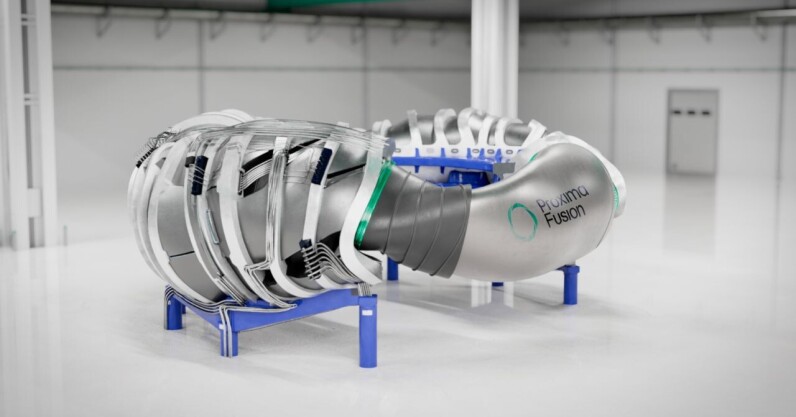
Highly dependent on imported fossil fuels and renewable energy technologies from foreign powers such as the US, China, and Russia, Europe’s energy security is in a precarious state. One potential fix? Harnessing nuclear fusion — the same atom-colliding reaction that powers the Sun and stars.
While not yet proven commercially, fusion energy could provide Europe with a vital source of safe, locally produced, always-on clean power. Another plus is that future fusion power plants will likely run on abundant fuels like deuterium and tritium, which aren’t confined to specific geographies.
Francesco Sciortino, co-founder and CEO of German startup Proxima Fusion, believes fusion energy can complement wind and solar power and become a “decisive building block” for Europe’s energy security.
“Fusion holds the potential to fundamentally transform the way we think about energy, changing the world from a place that’s controlled by those with reserves of oil and gas, to one where technology lets countries control their own fate,” he told TNW.
One of the most advanced kind of fusion energy globally approaches is magnetic confinement. These ring-shaped machines use powerful magnetic fields to contain super-hot plasma, creating the conditions for fusion reactions to occur. It’s a technology in which Europe already has a head start.
“Europe has an incredible strength in magnetic confinement fusion, with around twice the number of researchers and large-scale [fusion] devices than the US,” said Sciortino.
Proxima — the first company to spin out from the Max Planck Institute of Plasma Physics in Germany — is building a type of magnetic confinement device called a stellarator. This machine differs from the more common tokamak design at the heart of major international projects like ITER in France and STEP in the UK.
While more complex to build, stellarators have several advantages over tokamaks. They need less power to operate and make the plasma easier to control. This stability is critical for a viable fusion energy plant.
Europe is a world leader in this kind of fusion technology. Germany hosts the most advanced stellarator, Wendelstein 7-X. That machine laid the foundation for Proxima’s Stellaris reactor design, revealed in February.
Stellaris is set to be completed in just six years. The machine will lay the foundation for Proxima’s first 1GW fusion reactor, which the company hopes will power up sometime in the 2030s.
Proxima is one of dozens of fusion energy startups racing to commercialise the technology, many of which are Europe-based. The best-funded include the UK’s Tokamak Energy and Germany’s Marvel Fusion.
The future of fusion energy
There’s a cliche that fusion technology is always “30 years away,” but 70% of experts believe we’ll have a fusion device powering the grid by 2035, a Fusion Industry Association survey found last year.
If those predictions come to pass, fusion could become an important part of Europe’s renewable energy mix — and one with distinct advantages. Unlike wind or solar, fusion would provide continuous power. Unlike fossil fuels, much of which is imported from countries like Russia and the US, fusion is clean and could be homegrown, boosting energy security.
However, with the US leading in private investment in fusion energy, Sciortino warned that Europe may lose its advantage and urged governments to support emerging startups.
“This is an important moment for Europe — a moment when we have the chance to make choices that will define the coming decades, and a chance to seize the lead in the global race to commercial fusion,” he said. “Europe cannot afford to squander the opportunity; it must invest in companies that are working towards our continent’s energy security and sovereignty.”
European sovereignty will be a hot topic at TNW Conference, which takes place on June 19-20 in Amsterdam. Tickets for the event are now on sale — use the code TNWXMEDIA2025 at the check-out to get 30% off.



